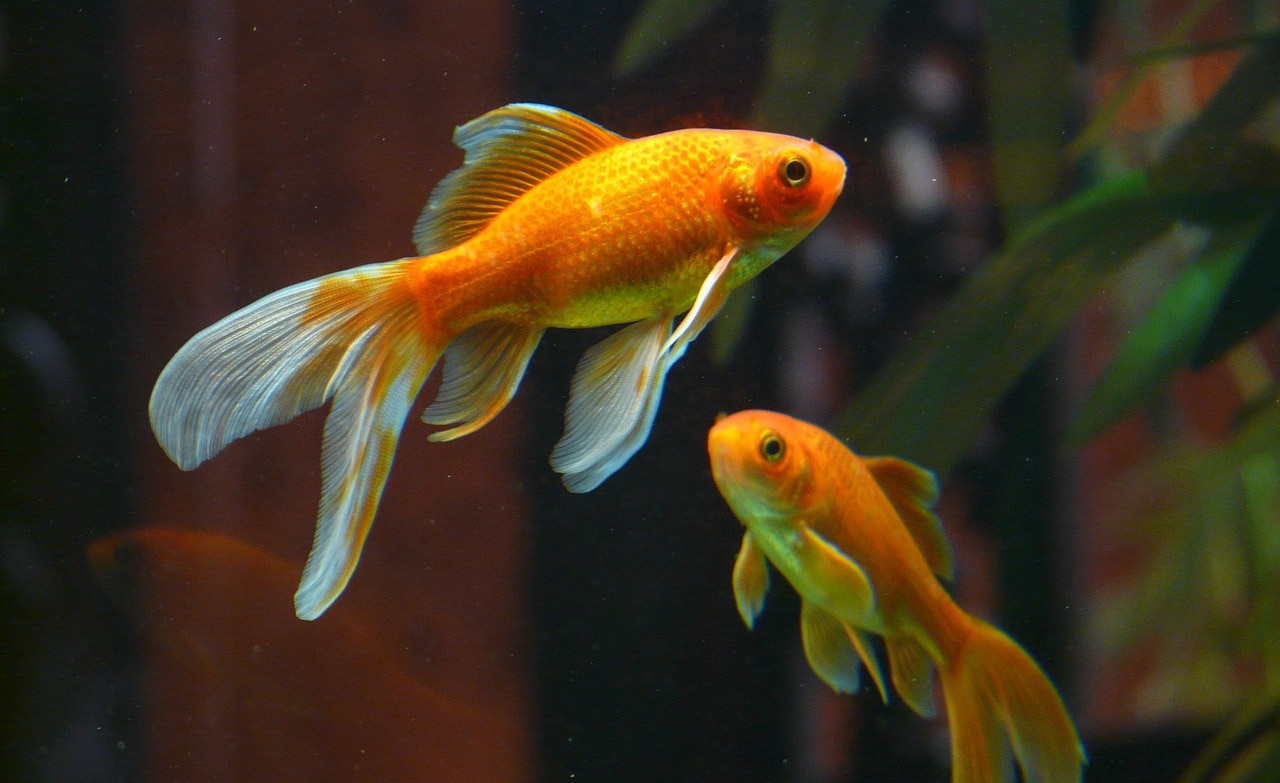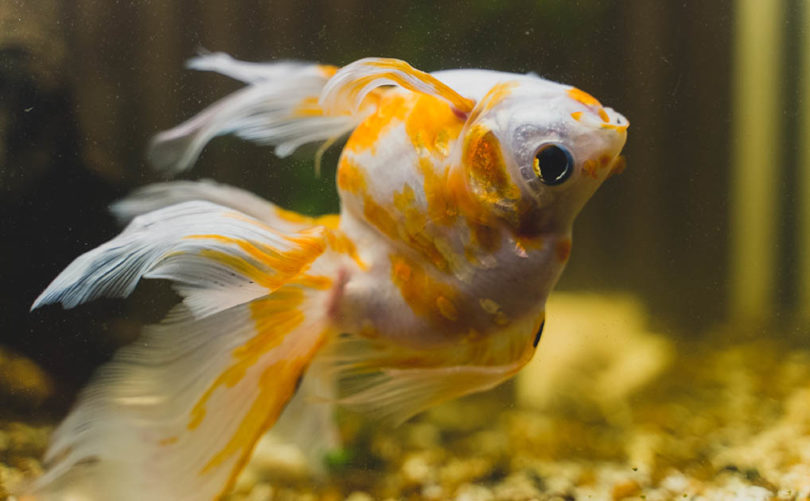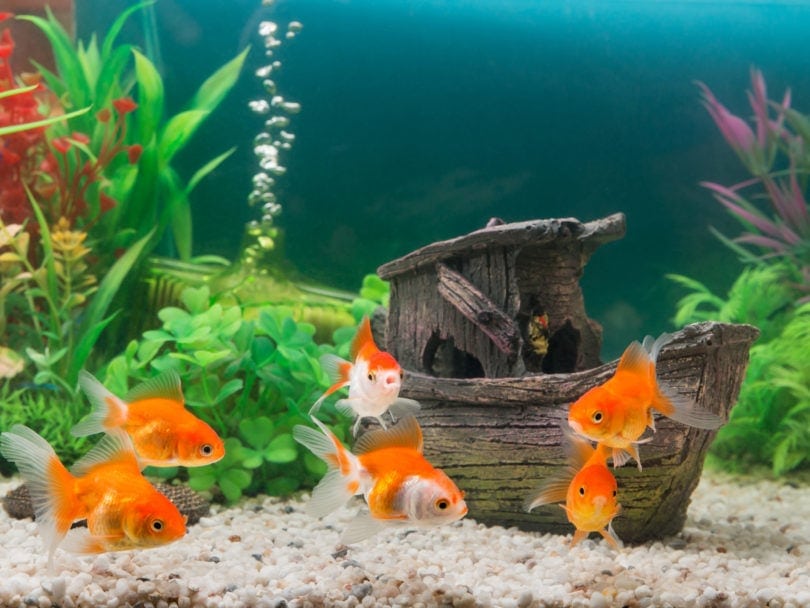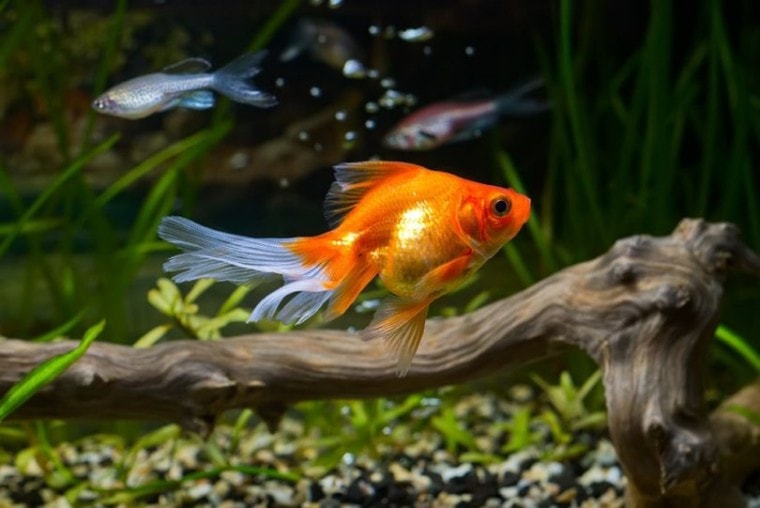
Click to Skip Ahead
We’ve all been there; the aisle in the pet store that’s lined with dozens of fish bowls of different shapes and sizes. We’ve also all run into someone who insists that keeping goldfish in a fishbowl is animal cruelty and abuse. Anecdotally, tons of people claim to have kept a goldfish alive in a fishbowl for 15 years or more. So, what gives?
Keeping a goldfish in a bowl can be cruel, but keeping a goldfish in a poorly maintained large tank is just as cruel. Goldfish can theoretically thrive in a very large fish bowl but there’s very specific care that goes into keeping a goldfish healthy in a bowl and these tasks are best left to experienced fish keepers. Almost all commercial fish bowls are inappropriate when it comes to housing goldfish on a long term basis and you should house your goldfish in an aquarium instead.
In many parts of the world, it may be possible to win a goldfish at a carnival, fair, or festival. We do not recommend or advise adopting a goldfish this way unless you are able to provide a suitable home for them. Legislation in recent years has led to some countries imposing a ban on having goldfish given as prizes at fairs or carnivals.
At Petkeen, we do not encourage or recommend placing goldfish in bowls as it is very difficult to cater to their needs in such a setup. Goldfish are social, messy, large, long-lived, and should be kept in groups in aquariums large enough to house them. Please note that some cities, counties, and jurisdictions have passed legislation which prohibits housing them in bowls.
The History of Fish Bowls
Tracing the concept of goldfish being kept in bowls requires a look into their compelling history. Goldfish originate from China and were originally only kept by royalty. The royal dynasty back then viewed goldfish as a symbol of luck and fortune and housed them in ponds.
On occasion, the goldfish would be temporarily displayed in relatively small containers for guests to admire them. However, these “relatively small” containers were still very large, with historians estimating that they could hold anywhere from 80 to 100 gallons of water! These bowls were filled with fresh water by servants of royalty to ensure welfare for the prized goldfish. Several workers were needed to carry a single bowl, and they would replace the water on a daily basis to ensure the health of the fish, given their importance in royal family lore. Most importantly, they were just temporary holding containers for the fish, not a permanent home. They were usually returned to their streams after a day of display.

In the earlier years of fish keeping, bowls surged in popularity again, because of their shape. A wide belly and narrow neck made them ideal for stacking, transporting, and temporarily displaying fish. Again, the intention was to use them just for a temporary basis.
Unfortunately, despite advancements in fish transport methods, bowls have stuck around.
In many parts of the world, the lack of legislation allows goldfish to be handed out as gifts at carnival fairs and festivals. Bowls are often incorrectly given along with the fish. However, as we’ve learned from history, they aren’t intended or suitable as a long-term housing option for your fish.
The Problems With Fishbowls Today
When used for long-term housing of goldfish, fishbowls available in markets today come with a plethora of problems. In fact, their incompatibility as a permanent tank for fish has led to some countries introducing legislature and law that has now banned them. Here are just some of the reasons why you shouldn’t house your goldfish in fish bowls:
For these reasons (and many more) housing goldfish in a tank is a task that’s best left to experienced fish keepers who only do so on a temporary basis for very specific purposes.
What Makes a Healthy Goldfish Tank?
Filtration
Goldfish create a ton of waste, or a heavy bioload, in their environment. They’re messy fish, and some people even believe that goldfish can’t be kept with other fish because of this waste load. Goldfish can be kept with other coldwater fish, but the filtration of the environment is extremely important, whether it’s a single goldfish or 20. Tropical fish are not compatible with goldfish because of their different temperature requirements.
Aquarium filters don’t just remove small and large waste particles from the water, but they also serve as the perfect location for the colonization of beneficial bacteria. These good bacteria consume things like ammonia and nitrite. Beneficial bacteria prefer environments with moving water, making filters a hotspot for these good guys.
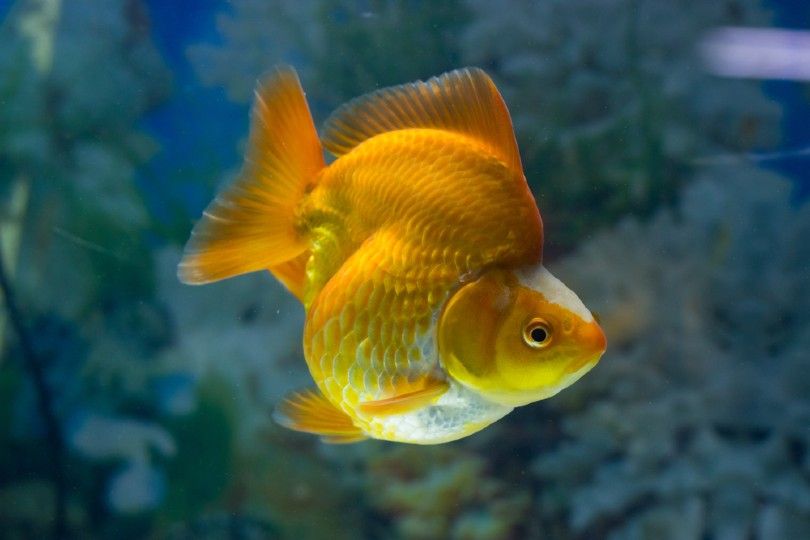
Aeration
A square or rectangular shaped aquarium is the best for goldfish, as it allows for great surface area on the surface for oxygen exchange. Goldfish require a high amount of aeration for proper growth. This can be accomplished in several ways:
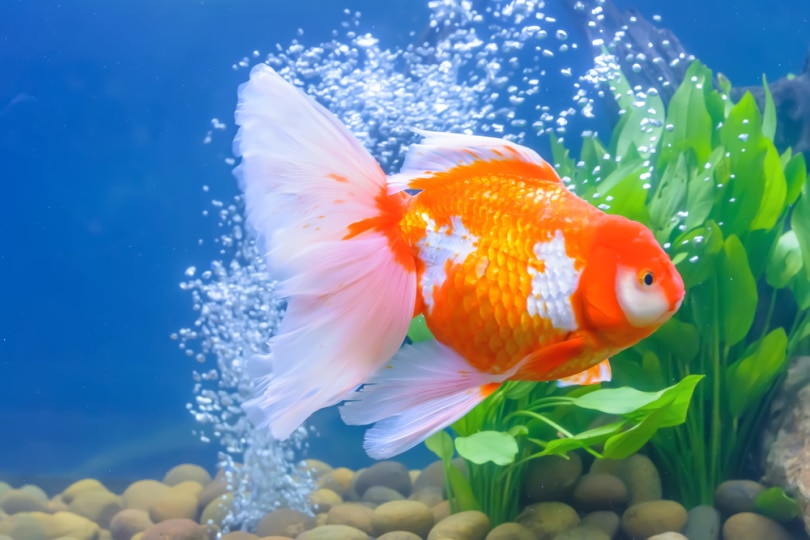
Plants
The addition of live plants to an aquarium improves the oxygen available in the water, and plants consume nitrogen waste products such as nitrate, to help them grow. Live plants are natural filtration systems and while they don’t replace a full filtration system for your goldfish, they are a beneficial addition. Many aquatic and semi-aquatic plants are easy to grow and will thrive with regular natural or room lighting. Examples of such plants include duckweed, java ferns, and anubias nanas.
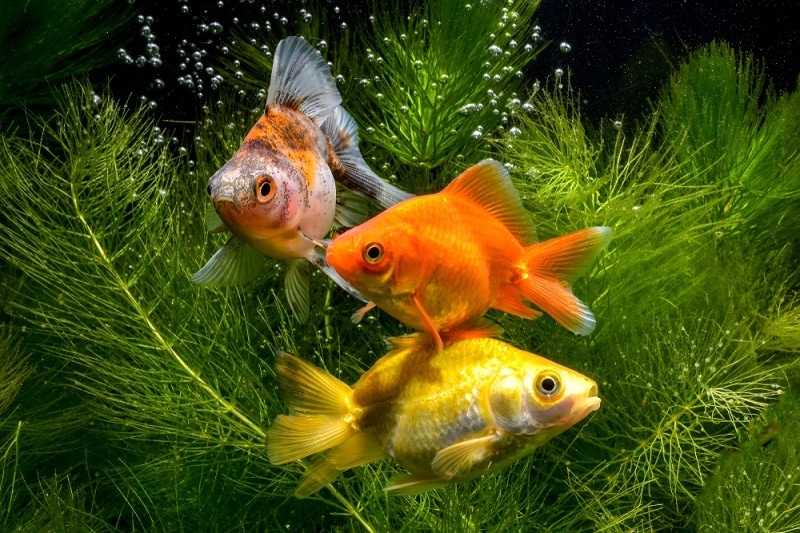
Water Quality
Filtration and aeration are only two pieces of the puzzle when it comes to providing excellent water quality for your goldfish. Dangerous waste products, like ammonia, will rapidly build up in a goldfish’s environment. They build up most quickly in small environments, like a fishbowl. A filtration system and live plants will help pull ammonia, nitrite, and nitrates from the water, while aeration provides oxygen and water movement needed by both goldfish and plants. It’s important to cycle your aquarium before adding goldfish.
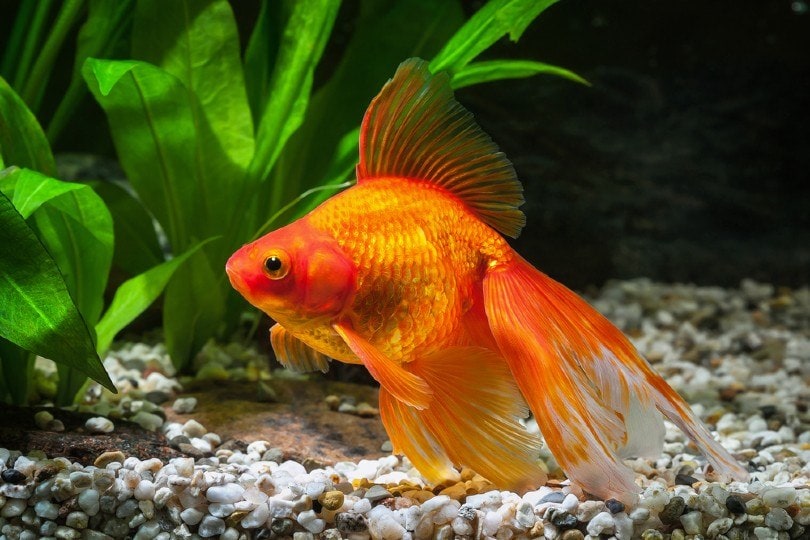
To maintain water quality in a fishbowl, routine water changes are necessary. How frequently this should occur will depend on how many goldfish are present and the size of the environment they’re living in. As a general rule, a properly stocked and adequately filtered aquarium needs about a 25% water change on a weekly basis. Treating new water added to the aquarium will remove toxins like chlorine and it will replace some of the waste products with clean water.
If you are looking for help to get the water quality just right for your goldfish family in their aquarium, or just want to learn more about goldfish water quality (and more!), we recommend you check out the best-selling book, The Truth About Goldfish, on Amazon today. It covers everything from water conditioners to tank maintenance, and it also gives you full, hard copy access to their essential fishkeeping medicine cabinet!
How Big Should My Goldfish Tank Be?
The following tank sizes are recommended for goldfish.
- You May Also Like: Is Goldfish Tank Size Important? Vet-Approved Aquatic Facts & Info
Conclusion
Fish bowls aren’t recommended for goldfish because they are very difficult to properly maintain and can’t meet a goldfish’s long term housing requirements. Goldfish require large aquariums, which are much more humane, easier to maintain, and allow for more options.
Related Goldfish reads:
- Understanding Why Your Goldfish Died: 9 Potential Reasons
- 20 Fancy Goldfish Breeds (with Pictures)
- 9 Mistakes to Avoid Making as a Goldfish Keeper
Featured Image Credit: Skumer, Shutterstock



